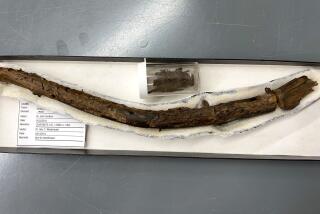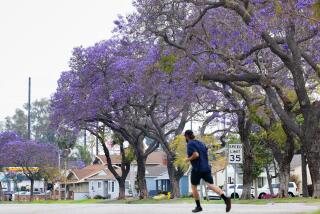Making Choices for a Plum Assignment
Plum trees do quite well in most Southern California growing regions, with the exception of the immediate coastal and low desert areas. When it comes to plum varieties, Southland residents have a nice selection of proven varieties.
Here is a rundown of plum varieties that are reliable producers in most local climatic zones. Please note that some plum varieties will need a pollinator, which is another plum variety planted in close proximity.
Santa Rosa--Probably the best all-around plum for Southern California. Large, juicy fruit. Purple skin and yellow flesh. The most popular plum in the Western United States. Self-fruitful.
Satsuma--My favorite plum because of its marvelous sweet-tart flavor. Small or medium-size fruit with dark red skin and blood-red flesh. Excellent for eating fresh or in jams and jellies. Requires a Santa Rosa plum tree planted nearby for cross-pollination.
Mariposa--Very large fruit with deep maroon skin and flesh. Sweet and juicy, with a slight hint of tartness; a delicious dessert fruit. Needs to be pollinated by Santa Rosa.
Howard Miracle--A good choice for milder coastal valleys as it has a very low chilling requirement. Howard Miracle produces beautiful yellow fruit blushed with red. The flesh is yellow and juicy with a slight pineapple flavor. Does not need a pollinator.
Nubiana--Large, oblong fruit. Skin is a bluish-red color; flesh is amber and turns red when cooked. Mild, sweet flavor, good for eating fresh or in preserves. Prolific producer. No pollinator necessary.
Weeping Santa Rosa--Similar to Santa Rosa, but with an unusual weeping growth habit. Same good quality as Santa Rosa, but fruit matures about a week later. Good espalier quality. No pollinator.
Green Gage--This is a fine old-time variety. It has unusual greenish-yellow fruit with juicy, yellow, sweet flesh. Self-fruitful.
Elephant Heart--Big, heart-shaped fruit with purple skin and blood-red, juicy, sweet flesh. Late-bearing trees produce over a long period. Plant along with “Santa Rosa” or “Weeping Santa Rosa” for proper pollination.
Trees for the above varieties may be located in local nurseries from winter to early spring as bare-root trees, and throughout the rest of the year in containers. The more popular varieties, such as Santa Rosa and Satsuma, are readily available; phone around to locate other varieties.
Choose a sunny planting site and dig a hole twice as wide as the tree’s root system, but only as deep as was originally wrapped or as deep as grown the container.
Planting time is a good time to add slow-release fertilizer tablets. Tablets such as Osmocote Planting Tablets or Jobe’s Tree Spikes will provide long-term nutrient release without burning the roots. They are also ideal for fertilizing established trees. Follow label directions carefully. Water during planting.
After planting, if there is no rain, water the new trees twice a week, or daily during Santa Ana winds or hot spells, for the first four weeks. Then establish a weekly (in absence of rain) watering routine. Once trees are established, a deep watering is necessary; avoid soaking the lower trunk by using trickle irrigation.
Plums require fruit thinning by hand each season. Thin fruit four to six inches apart when the fruit is the size of a thumbnail.






